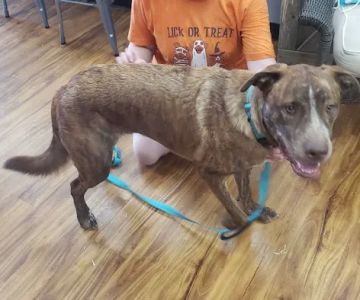How to Teach a Dog to Respect Your Space
Dogs are wonderful companions, but sometimes they can get a little too eager to be close to you. Whether they’re constantly jumping up on you, invading your personal space, or not respecting boundaries, it can become frustrating for both you and your dog. However, the good news is that with patience, consistency, and the right techniques, you can teach your dog to respect your space. This article will walk you through how to establish boundaries, train your dog to understand personal space, and foster a more harmonious relationship between you and your furry friend.
1. Understanding Why Dogs Invade Your Space
Before diving into the solution, it’s essential to understand why dogs invade your space in the first place. Dogs, by nature, are social animals. They seek connection with their pack, which includes you, their human. A dog’s behavior, such as jumping on you or following you around, is often a sign of affection or an attempt to bond. However, this behavior can sometimes be overbearing and result in an overwhelming sense of being crowded.
In addition to affection, some dogs may be more needy or anxious, leading them to seek constant reassurance through physical proximity. Others might simply be unaware of personal space because they have never been taught boundaries. Regardless of the reason, it’s important to establish clear rules and boundaries to ensure that your dog respects your space while still maintaining a loving relationship.
2. Setting Boundaries from Day One
Consistency is key when it comes to teaching a dog to respect your space. It’s important to set boundaries early on, even if your dog is a puppy. Establishing rules from the start will help prevent unwanted behaviors from becoming ingrained in your dog’s routine. If you allow your dog to jump on you or invade your space as a puppy but try to stop the behavior when they’re older, it will only confuse them.
Start by teaching basic commands like "sit," "stay," and "off" that can help maintain a respectful distance. Using these commands in combination with consistent rules—such as not allowing the dog on the furniture or not letting them approach you without permission—can help set a clear structure that your dog will understand.
3. Teach Your Dog to Stay Calm and Relaxed
One of the best ways to help your dog respect your space is to teach them how to relax and stay calm. Many dogs invade personal space due to excitement or anxiety. Teaching your dog to relax when you're around can help reduce the urge to crowd you. Create a calm environment where your dog can learn to sit quietly by your side without jumping or nudging you.
Positive reinforcement plays a significant role here. When your dog respects your space and stays calm, reward them with praise, treats, or toys. Reinforce calm behavior by rewarding your dog when they maintain a respectful distance, allowing you to reinforce good habits and discourage the unwanted ones.
4. Use Crate Training to Encourage Independence
Crate training is another effective tool for teaching your dog to respect your space. While crates should never be used as a punishment, they can be an excellent way to give your dog a private, comfortable space where they can relax. A crate provides a safe and controlled environment for your dog, and it can also be used to teach them that there are times when they need to be independent and give you space.
Introduce your dog to the crate gradually, using positive reinforcement and rewards. Encourage them to spend time in their crate when you need some space, and over time, they’ll begin to associate the crate with comfort and relaxation. This can help alleviate the tendency to constantly seek your attention and invade your space.
5. Exercise and Mental Stimulation
A tired dog is a well-behaved dog. Dogs who don’t get enough exercise or mental stimulation may resort to attention-seeking behaviors like crowding you or invading your space. By providing regular physical exercise, such as walks, playtime, and training sessions, you can help your dog burn off excess energy and reduce the likelihood of them seeking your attention by invading your personal space.
In addition to physical exercise, mental stimulation is also essential. Puzzle toys, treat-dispensing toys, or training exercises can keep your dog’s brain active, allowing them to focus on something other than being constantly by your side. A mentally stimulated dog is more likely to understand the importance of respecting your space and staying independent when needed.
6. Be Consistent and Patient
Finally, consistency and patience are the most important elements when teaching your dog to respect your space. Dogs thrive on routine, and they need clear, consistent messages from you to understand what behavior is expected. It might take time, but with patience, your dog will gradually learn to respect your boundaries and space.
Be sure to reward positive behavior consistently, and avoid punishing your dog for misbehaving. Dogs respond better to positive reinforcement rather than negative punishment. As your dog learns what is expected, you’ll see more respectful behavior and a stronger bond between the two of you.
It's also essential to stay patient during the training process. Even if your dog doesn’t catch on immediately, remember that building respect takes time, and your dog’s progress will come with continued effort and understanding. Keep the training sessions short, positive, and enjoyable for both you and your dog, and you will see progress over time.
SEO Title: How to Teach a Dog to Respect Your Space SEO Keywords: teach dog respect space, dog training, dog behavior, dog respect, dog boundaries, puppy training SEO Description: Learn how to teach your dog to respect your space with positive reinforcement, crate training, and consistent rules. Build a better relationship with your furry friend.










